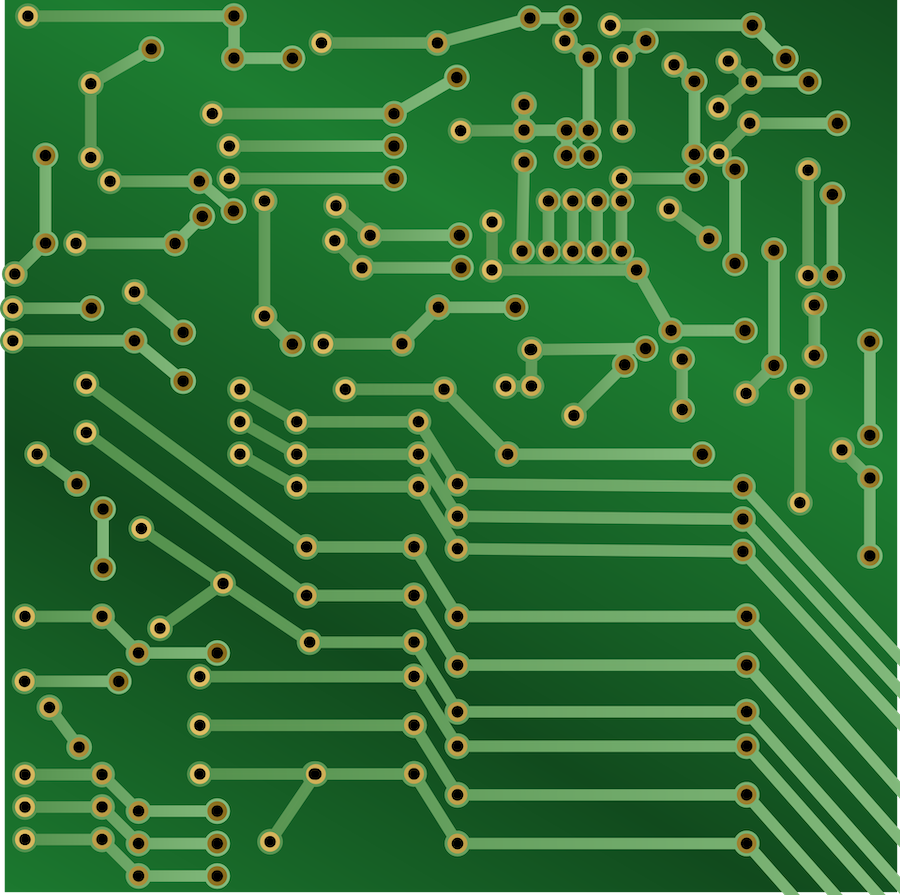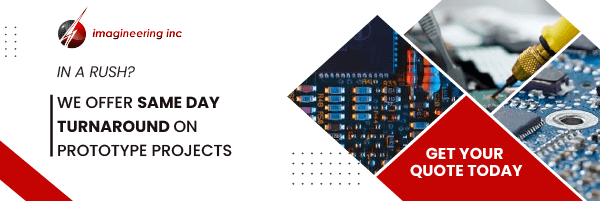Having your schematic design thoroughly tested and prototyped is an essential phase in any manufacturing process. Printed Circuit Board (PCB) prototyping will allow you to spot design flaws and address them at this stage.
Before you send your product off to the manufacturer, you’ll want to be sure that you’ve caught all of the bugs and design flaws. The last thing that you’d want is thousands of faulty products on your hands.
Prototyping your circuit board pattern is also further proof of concept. This is both useful in proving your intellectual property and for demonstrating your product to potential investors and buyers.
But what is a prototype PCB board? In this article, we’ll discuss prototype PCBs, their uses, and what build requirements are associated with them.
What is a PCB Prototyping?
Printed Circuit Board prototyping is an essential step in the design process of an electrical item. Printed circuit boards use conductive tracks to connect components.
Printed circuit boards have lower manufacturing costs that traditional circuit boards. Because they are printed, there is no need for a complex wiring process.
Electronic design businesses can benefit from faster turnaround time, as the manufacturing process for a PCB is far less labor-intensive than traditional circuit boards.
Due to the lack of wiring, PCBs are safer and more reliable. They are also less pross to short-circuits. Using PCBs also prevents wires from snapping or breaking loose.
What is the Difference Between Prototype PCBs and Solderless Breadboards?
A solderless breadboard is a useful tool in electronics development. Solderless breadboards have been in use since the 1970s.
Breadboards consist of a grid of spring-loaded clips that allow the electrical connections.
Breadboards are temporary and can be reused for other designs, making them a handy tool in printed circuit board prototyping. They can be used to test the functions of a particular design before a printed circuit board can be made up later.
Breadboards have some limitations. They’ll only work with through-hole components, whereas a printed circuit board will typically use surface-mount components.
While a breadboard can be useful for specific circuits, it can cause problems in using breadboards as a meaningful prototype because of the lack of surface-mounted components.
In most cases, modern circuitry should have prototype PCBs made up rather than settling for a breadboard prototype.
How is a Circuit Board Made Up?
There are several types of circuit boards. The most common are single-sided and have copper tracks connecting the components on one side of the PCB. These are called one layer PCBs, although you can also find double-sides PCBs and multi-layered PCBs.
Several elements make a printed circuit board. These include FR4, copper, solder mask, and silkscreen.
FR4
FR stands for “flame retardant.” FR4 is a glass-reinforced epoxy resin laminate. This is the main element of the circuit board, and it is also the part that gives it rigidity.
Copper
Copper is laminated to the board. This process involves heat and adhesive. The number of copper plates used will determine whether the board is a one-layer PCB, whether it is double-layered, or multi-layered.
Soldermask
The solder mask layer is in place to insulate the copper traces. This prevents solder jumpers and keeps the copper from coming into contact with other metal.
Silkscreen
The final layer on a printed circuit board is the silkscreen layer. This is used to print letters and numbers onto the PCB to aid in the assembly process. Although white is the most common choice, any color can be used.
What is the PCB Manufacturing Process?
There are two different types of processes used in the fabrication of printed circuit boards; these include through-hole and surface mounted.
Through-hole technology uses leads inserted into holes on one side of the circuit board. These are then soldered to the copper layer on the opposite side.
Surface-mounted technology is directly soldered onto the board. There is no need to use leads.
The advantage of surface mounting technology over through-hole boards is that you can create smaller PCBs with the ability to carry out more complicated processes.
What Are the Requirements to Build a PCB Prototype?
Before you have your PCB prototype built up, you will need to have the correct documentation in place.
Focus your attention on creating readable and easy-to-follow documentation to ensure your design is correct. Your PCB manufacturing documentation should never be an afterthought.
Your PCB documentation should include some context. This is particularly relevant when your designs are for innovative or proprietary technologies.
To ensure your PCB manufacturing documentation is correct, and to make the process as easy as possible for yourself, you can follow these steps:
- Use templates to save time
- Be aware that all edits and deletions have been made when using copies based on older documentation
- Make sure that you have a review and sign-off process to ensure accuracy
- Ensure all of your documentation matches the completed design.
- Make sure part numbers are up-to-date.
In summary, when seeking out professionally made prototype printed circuit boards, you must be thorough in the information that you provide. Errors on the page can translate to faults with the prototype. This can lead to a more protracted and more expensive testing process.
Where Can You Have Your PCB Prototype Built?
Using Imagineering for your Printed Circuit Board prototyping and manufacturing, you’ll benefit from faster turnaround times and lower costs due to the lack of tariffs.
Get in touch today for a quote and to discuss your prototype and PCB manufacturing needs.


